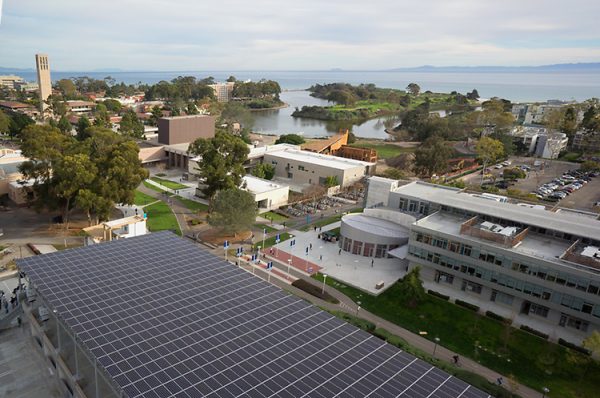Know the Numbers: UC Santa Barbara Launches Campus Energy Dashboard

How many times have you been told to turn off the lights when you leave a room? Probably many, because energy consumption is expensive and a huge contributor to the size of our individual and collective carbon footprint. But unless you’re paying the energy bill (or living with someone who does!), it’s easy to forget about energy conservation. Since students, staff, and faculty aren’t personally footing the campus energy bill, access to information is the next best way to incentivize them to alter their behavior — and this is exactly what the new UCSB Energy Dashboard aims to provide.
Created in response to student requests for campus energy usage data, the Dashboard gives the campus community access to data in real time, without needing to log in to a complicated application. The energy usage of most campus buildings for the last day, week, month, and year are available through engagementdashboard.com/ucsb. It also includes the expected amount of usage for each of those time frames, and then ranks buildings according to the percentage that they increased or decreased from the expectation. The website, developed for UC Santa Barbara by the global technology company, Yardi, is part of a UC wide initiative to decrease its carbon footprint.
But the quest to increase campus awareness of energy usage doesn’t end with the current dashboard - the University of California is already working on an expanded and more powerful online resource. Based on a platform developed by engineers at UC Davis, the next generation campus dashboard will be much more interactive and provide more extensive information like the types of energy each building uses and the amount of money spent operating it. These initiatives will help the UC system reach its goal of reaching Carbon Neutrality by 2025.
The main way these resources aim to decrease UCSB’s carbon footprint is by raising awareness. If students, faculty, and staff can see real-time energy usage, it will help them to be conscious energy consumers by better understanding energy use patterns and spotting periods of waste. The current dashboard also allows the campus to begin launching programs to decrease energy usage. Initiatives include residential hall energy competitions in which halls compete against one another to lower energy use — and competitors could see the effects of their efforts in real time.
With more access to information on campus energy use, it’s important for students, staff, and faculty to use that knowledge to create positive change. Jordan Sager, an Energy Manager in the Design, Facilities, and Safety Services Department, says, "We're pleased to be able to make this tool available for Gauchos to gain insights into UCSB's energy use patterns on a more granular level. There are countless opportunities for conservation and cost savings on our campus, and everyone has a role to play.” The following are some ways you can do your part in helping to reduce the university’s carbon footprint:
- Turn the lights off when you’re the last to leave a room.
- Turn off unnecessary equipment in your laboratory, classroom, office, or residence.
- Report broken equipment and/or energy waste to Facilities Management.
If you would like to take a more active role in helping UCSB reduce its carbon footprint you have a few options!
Consider participating in the Cool Campus Challenge, a UC-wide competition that students, faculty, and staff take part in! From April 1 - April 26, earn points by participating in energy saving tasks. Click here for more information about the Cool Campus Challenge.
The Green Initiative Fund is another great way to get involved! Created by students in 2006, the program funds projects that help decrease the impact our campus has on the environment. Visit the TGIF website for more information.